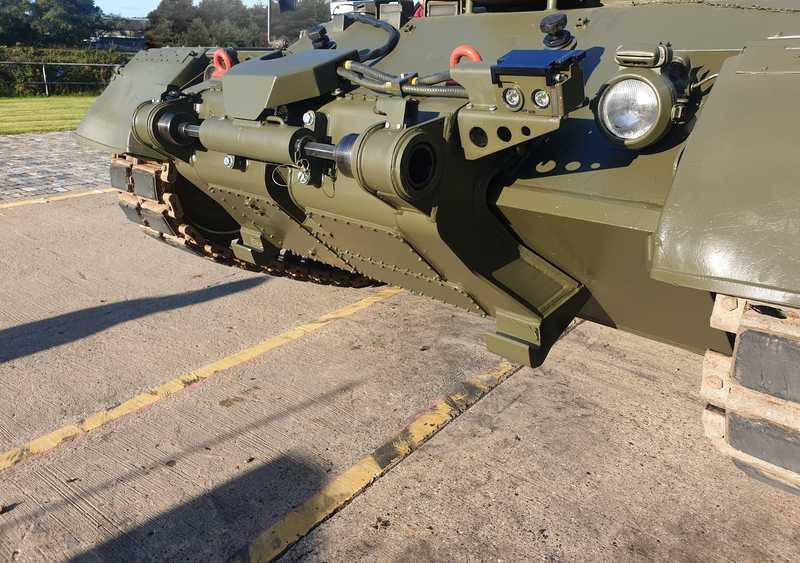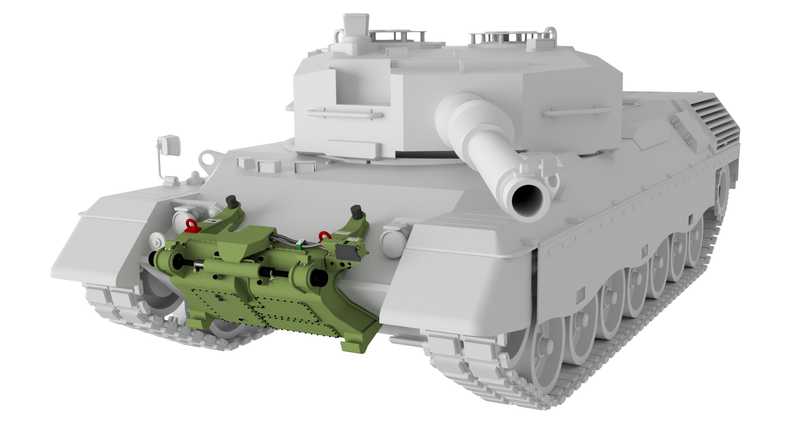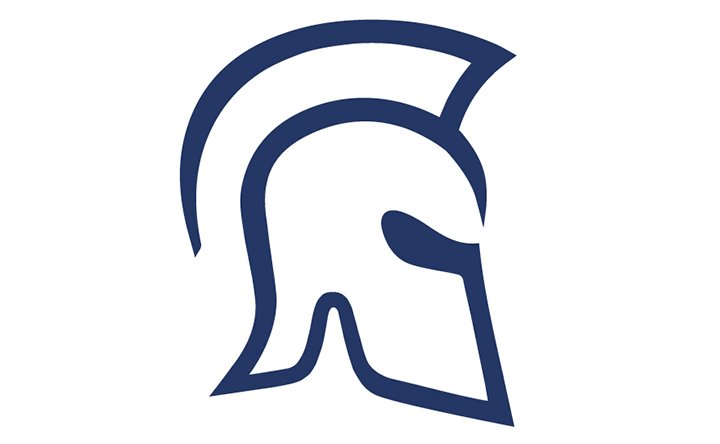Enabling Main Battle Tanks to defend, move and fight (Sponsored)
For nearly four decades, Pearson Engineering has equipped combat engineers around the world with rapidly interchangeable front-end attachments to meet the needs of the mission.
This article is brought to you by Pearson.
For nearly four decades, Pearson Engineering has equipped combat engineers around the world with rapidly interchangeable front-end attachments to meet the needs of the mission. Building on this approach, which has been proven across the globe on heavy, medium, and lightweight platforms, Pearson Engineering is now turning its attention to equipping combat vehicles in the same way.

Recognising that combat engineers cannot be everywhere, all of the time, particularly in increasingly complex and dispersed conflict environments, SLICE has been developed to enable the integration of equipment to defeat ordnance and obstacles to combat vehicles without permanently changing their mission or modifying those vehicles.
Traditionally called a ‘Battalion Counter-Mine Set’, such equipment has typically required permanent modification of the vehicle to enable integration. Whilst this is a proven concept with its own benefits, SLICE provides enhanced flexibility and crucially, reduced impact on vehicle survivability as a ‘plug and play’ interface.
Integration of SLICE is achieved with simple attachment points, designed to meet the vehicle geometry and NATO slave socket. SLICE contains within it all other electric and hydraulic processes to facilitate the integration and operation of the equipment.
Once integrated, equipment can be attached, operated, and released simply in field conditions and without any special tools.
Whilst the integration benefits are clear, SLICE also delivers a tactical advantage.

Such simple integration methods mean that any vehicle of the same type and geometry can use a SLICE and add front-end equipment, providing high levels of mission flexibility, and enabling Commanders to scale quickly according to combat requirements.
Further, front-end equipment can be pooled between vehicles with different roles, meaning that Armoured Engineering Vehicles and Main Battle Tanks can share equipment to overcome natural and deliberate obstacles.
Whilst it is unlikely that a Main Battle Tank or other combat vehicle would be deployed to deliberately clear a minefield, providing it with the capability to do so, when it needs to be somewhere, enhances the Armed Force’s ability to respond to rapidly changing situations and to overcome the tactics of adversaries.
This leaves Armoured Engineers free to concentrate on specialist tasks in support of the wider force. Armoured Engineering Vehicles will also no longer clearly signal direction of travel and intent, providing a muddied picture to adversaries and supporting freedom of manoeuvre.
Three types of equipment are typically used with combat vehicles, including:
Self-Protection Mine Plough
The Pearson Engineering Self Protection Mine Plough, or ‘Track Width Mine Plough’ as it is commonly known, moves concealed or buried mines and improvised explosive devices away from the vehicle’s tracks to create a safe route.
Self-Protection Roller
Pearson Engineering Self-Protection Rollers are designed to exert the necessary forces into the ground to initiate live pressure fused Improvised Explosive Devices across the track width of the vehicle.
These roller types are temporarily fitted to the front of a vehicle which is going to be used in an area where there is a possibility of Improvised Explosive Devices. Ground-engaging wheels reach out significantly ahead of the vehicle to detonate the threat before the vehicle wheels reach it. This capability has saved countless lives and can be tailored to meet the very specific needs of the end-user.
General Purpose Blade
The General Purpose Blade is designed to overcome obstacles such as roadblocks. It can also be used to create tank scrapes to take cover in contested areas where survivability is key.
To find out more about Pearson Engineering’s approach to enabling Main Battle Tanks and other Combat Vehicles, please visit www.pearson-eng.com
More from Industry Spotlights
-
![Expanded focus – unleashing the potential of commercial SATCOM for defence]()
Expanded focus – unleashing the potential of commercial SATCOM for defence
In conversation... Intelsat's Ray Lindenmayer talks to Shephard's Gerrard Cowan about the new capabilities advanced commercial SATCOM technologies can provide for military customers, and how industry and government can best work together to achieve maximum effect in orbit.
-
![Enhancing education: How CAE is embracing new technology to boost military training]()
Enhancing education: How CAE is embracing new technology to boost military training
In Conversation... Shephard's Gerrard Cowan talks to CAE's Marc-Olivier Sabourin about how the training and simulation industry can help militaries achieve essential levels of readiness by leveraging new technology, innovative procurement methods and a truly collaborative approach.
-
![Why tactical UAVs are winning on the future battlefield (Podcast)]()
Why tactical UAVs are winning on the future battlefield (Podcast)
In Conversation: In this special edition of the Shephard Defence Podcast, Tony Skinner sits down with Dan Slasky, President and CEO of Aeronautics, to explore how cutting-edge tactical unmanned aerial systems are reshaping today’s battlefields.
-
![Fincantieri’s Vulcano Class: a new era of versatility and innovation in naval operations]()
Fincantieri’s Vulcano Class: a new era of versatility and innovation in naval operations
Logistic support ships (LSS) are essential for sustained naval operations, especially during extended deployments far from home ports.
-
![Need more flexibility in battle management system delivery?]()
Need more flexibility in battle management system delivery?
Systematic’s newest solution, SitaWare BattleCloud, brings greater flexibility to combat information systems and C4ISR.
























